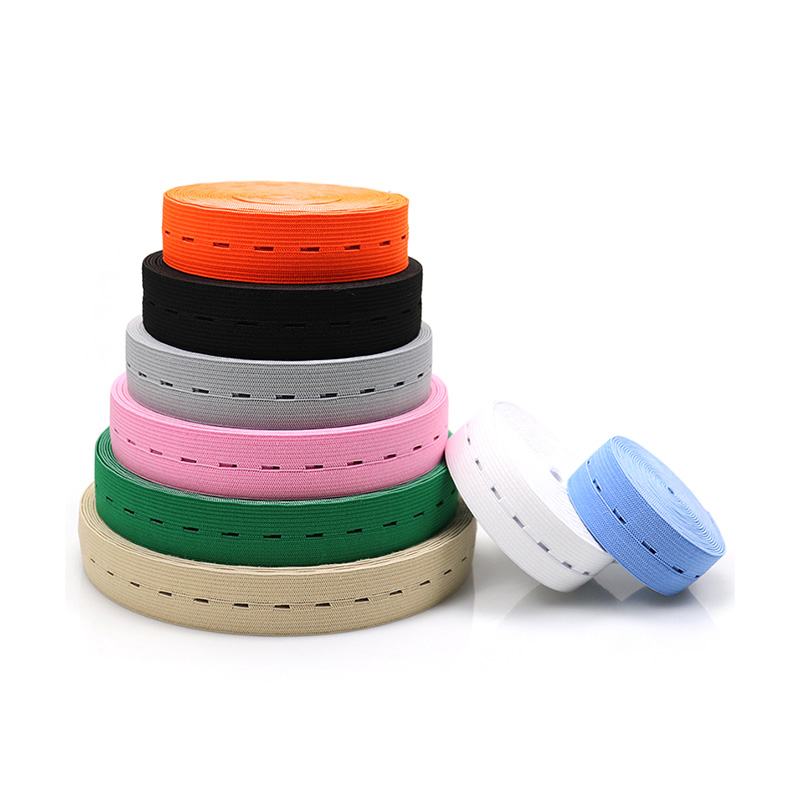Industry
 By Admin
By Admin
How To Choose The Right Elastic Width For Your Garment Design
Starting with a colored elastic waistband, this element is not only functional but also often adds a decorative touch to clothing. The width of the colored elastic waistband should complement the garment style and purpose. For casual wear such as joggers or skirts, a wider elastic waistband, around 2 to 4 centimeters, can provide better support and a comfortable fit. In contrast, slimmer elastic bands around 1 to 2 centimeters might work well for lighter garments like dresses or leggings, where a sleek look is preferred. When using a colored elastic waistband, keep in mind how the color and width work together to either make a statement or blend seamlessly into the design.

Similarly, a yoga resistance strap requires careful consideration of width. Yoga straps are designed to assist in stretches and exercises, so the width must balance comfort with functionality. A yoga resistance strap that is too narrow might dig into the skin during use, causing discomfort. On the other hand, one that is too wide may become cumbersome and harder to handle. Generally, yoga resistance straps range from about 3 to 5 centimeters wide, allowing for a secure grip and even distribution of pressure. If the strap is part of apparel, its width must also coordinate well with the garment's overall aesthetic.
The knitted waistband is a popular choice for many activewear and casual designs due to its flexibility and softness. Knitted waistbands are available in various widths, and selecting the appropriate size depends on the garment's weight and the desired stretchiness. For heavy fabrics like sweatshirts or jackets, wider knitted waistbands provide the necessary hold without sacrificing comfort. For lighter garments, a narrower knitted waistband may suffice while still offering a snug fit. When working with a knitted waistband, consider how the elasticity and width will affect the garment's silhouette and wearer experience.
Choosing the right elastic width isn't only about functionality but also about the intended use and wearer preferences. For example, a colored elastic waistband on children's clothing might be designed narrower to allow ease of movement, while adult activewear could favor wider bands for extra support. Similarly, a yoga resistance strap used in professional training might have specific width requirements to meet performance needs, whereas casual users may prefer a more flexible size.
Another important aspect is the fabric type to which the elastic will be attached. Elastic widths need to complement the fabric's thickness and stretch characteristics. A wide colored elastic waistband on a lightweight fabric may cause bunching or discomfort, while a narrow knitted waistband on thick fabric might not provide enough hold. Testing different widths with your chosen fabric can help identify the ideal fit.
The design of the elastic itself matters as well. Some colored elastic waistbands come with patterns or textures that stand out better when wider, making them a focal point of the garment. Conversely, small designs often use narrower elastic bands to keep attention on other garment features. In the case of yoga resistance straps, the width can affect how the strap rolls or lies flat, influencing its ease of use. Knitted waistbands typically have a soft texture and stretch that varies by width, which can subtly change the garment's feel against the skin.
When ordering or producing elastic bands, communication with your supplier about desired widths and uses is crucial. Samples of different widths for colored elastic waistbands, yoga resistance straps, and knitted waistbands can provide practical insights before final decisions. By experimenting with these options, you can better judge how each width performs in real use.
Ultimately, choosing the right elastic width is a balance of aesthetics, comfort, and function. For a colored elastic waistband, width selection impacts both how the garment looks and feels. With yoga resistance straps, width plays a role in effectiveness and comfort during stretching and exercise. Knitted waistbands depend on width to provide appropriate stretch and hold across different fabric types.
In summary, when designing garments that include a colored elastic waistband, yoga resistance strap, or knitted waistband, considering the width carefully will enhance the final product. Paying attention to fabric compatibility, wearer needs, and the specific role of each elastic type will guide you toward making choices that satisfy both design intent and practical wearability. Taking the time to test various widths ensures that your garment performs as intended and provides a comfortable, stylish fit.



 English
English Español
Español عربى
عربى Tiếng Việt
Tiếng Việt

